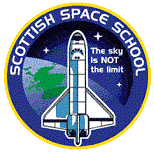 Bonjour fellow bloggers and blog viewers, I just came back from a fantastic residential week at Scottish Space School and I just thought it would be great to share this great experience with you all.
Bonjour fellow bloggers and blog viewers, I just came back from a fantastic residential week at Scottish Space School and I just thought it would be great to share this great experience with you all.
The Scottish Space School, as I mentioned several months before in a “thoughts” post, is a residential week aimed at students in their second last year of high school who are interested in pursuing a career in Engineering, Space Exploration or something along these lines, and is situated in the University of Strathclyde, Glasgow. This year I was one of the lucky 100 students to be selected from over 500 applicants based around Scotland to attend the week running from 11th to 16th June 2017.
The week-long programme included different engineering workshops, lectures from senior NASA guests, talks from people who worked in the Space industry, fun social events and many more.
Luckily I live in the suburbs of Glasgow, so travelling to the Strathclyde Campus was about a 20-minute drive which was an easy journey for me compared to some of the students that came from up North like the Highlands. Though funnily I was, in fact, struggling to find the meeting point which consequently left me wandering through the campus several times. In the rain. Without a hood!
The first day was obviously nerve-wracking for everyone, as most of the people were the only students to get selected from their school. Fortunately, a friend from my Physics class was also on the programme with me, and kept me company, for a little while, before being split into groups. Separate groups of roughly 10 students each. I was put into Team Aldrin, I got to admit, I liked the name. Throughout the entire week, we were pretty much in our groups all the time for the workshops and projects because we received a certain number of points each time which in turn decided the winning team of the week (unfortunately our group failed to rank in the top 3).
As a team, we were involved in several activities like designing a container for an egg to be dropped from a 4/5 metre height, a miniature rocket, and a space frame.
We also had to work together on “the Big project” in which all teams had a few days to plan, design and present an engineered product that met the brief. Our brief: Design a product related to the term “washing” that could improve the astronauts’ quality of life on the ISS.
We were introduced to all of the different types of Engineering within the overall Engineering Department of Strathclyde which were, for the most part, a talk followed by a group activity. These engineering disciplines were: Biomedical (which was actually pretty interesting for a non-biologist like me), Electronic and Electrical, Chemical, Mechanical and Aerospace, Design Manufacture and Engineering Management, Naval Architecture, and Civil and Environmental.

I also had the amazing opportunity to hear from some senior guests from NASA. Astronauts – Douglas Wheelock, Bob Cenker and Bill McArther, who went on Shuttle and ISS missions. Engineers – Heather Paul and Lee Graham. From them I not only was told of some of the great experiences and problems faced in the microgravity environment, the psychological difficulties, maintaining physical heath in Space, I also learned about their perspectives on life. The astronauts mentioned, looking out of the spacecraft window was the most mesmerising and amazing view, and when you look at life with such a huge perspective, you begin to forget about hardships and concentrate on achieving dreams and aspirations.

We are small and the Universe is big, despite this, if we try hard, we can achieve almost anything.
Thank you, Scottish Space School.
P.s. It wasn’t just NASA and the engineering aspects that made this week great, but also the Open Mic Night and the Ceilidh – but I have to say, Scottish Country Dancing is not my forte.
Author – Susan Chen
Susan is a 5th year high school student currently studying three STEM subjects at Scottish Higher level-Mathematics, Physics and Chemistry (Crash Course). She particularly loves ideas in cosmology and hopes to embark on an academic journey in the area of Physics.


